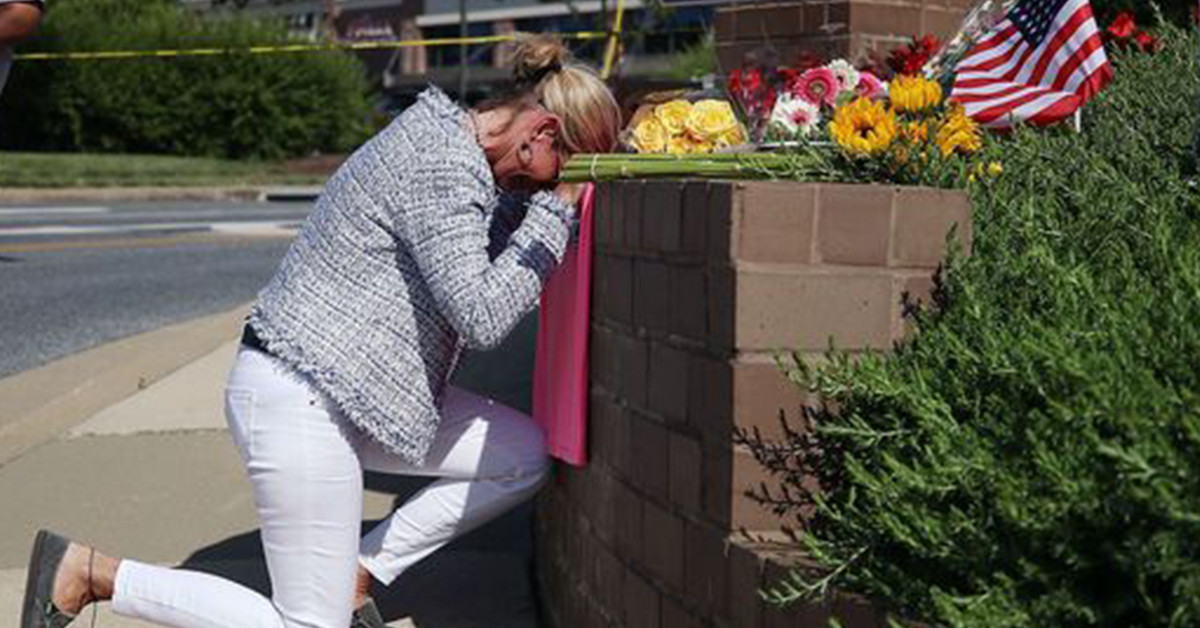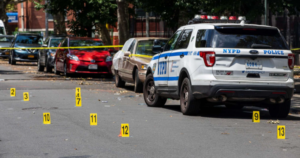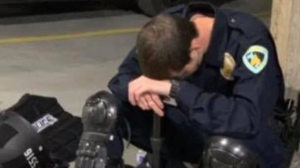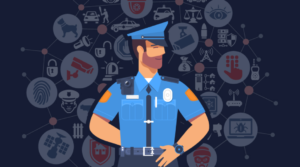Yesterday, tragedy struck in Annapolis, Maryland at the Capital Gazette – a local newspaper, an employer, a community staple and beacon of our country’s commitment and dedication to the First Amendment – when a man allegedly fired a shotgun through the newsroom’s glass doors. At the end of the rampage, five innocent people were dead and two were injured. Unfortunately, this is a story we’ve seen before. This targeted attack is the 154th mass shooting in 2018 to date.
Law enforcement’s response to this situation was professional and tactical. The police arrived on the scene in about 60 seconds. Not a shot was fired as police apprehended the alleged gunman.
The responding officers did what law enforcement officers do every day. As everyone is running away from danger, they went towards it. And, without knowing what was on the other side, they went through the door and into the unknown. Into danger. Annapolis Mayor Gavin Buckley credited law enforcement for its swift response, noting: “If they were not there as quickly as they were, it could have been a lot worse.”
Here’s what we know about the shooting suspect:
- He had a grudge against the newspaper, having previously filed and lost a defamation lawsuit against the paper.
- He created a Twitter page under his name, but with an image of a then-Capital Gazette columnist with a bio that read: “Dear reader: I created this page to defend myself. Now I am suing the s— out of half of AA County and making corpses of corrupt careers and corporate entities.”
- He reportedly “defaced” his fingers in what authorities’ suspect was a move to prevent his identification.
We also know the newspaper received threats via social media before the shooting.
I have no doubt that the professionalism and action taken by police during this event saved lives. Now, as this community and the nation asks what can be done to prevent another mass shooting, the question needs to be asked: what can we do to help law enforcement interdict a shooter and prevent lives from being lost next time, in the inevitable 155th mass shooting attempt? The answer is simple: law enforcement needs more time, and an alert that a potential threat is approaching.
3-5 Minutes
In an active shooter scenario, seconds count. Police responded to the Capital Gazette in 60 seconds, and I know to my core, they saved lives. What if they had an additional 3-5 minutes of lead time to interdict the suspected gunman before he shot through the glass door?
The crazy thing is that with technology, that 3-5 minutes exists. Can it prevent every shooter from succeeding? Sadly no. But, any loved one of someone lost from gun violence would give the world for 3-5 minutes more with that person. It’s fair to say they would also be thrilled to give that 3-5 minutes to police to try and save their loved one’s life.
With that said, here’s how a community can give law enforcement those precious minutes: by using automated license plate reader (ALPR) and facial recognition technology. The fact is that the suspect had a known grudge against the newspaper, and threats were made via social media against the paper in the hours before the shooting. If they knew about these threats, law enforcement would have had a head start and could have analyzed the subject of the threat – the Capital Gazette – for what it is from a tactical perspective: a target.
A target has an inner, a middle and an outer perimeter. Law enforcement and security experts know that each perimeter requires its own security measures. The closer the shooter gets to his target, the greater the risk to innocent people and law enforcement. By the time the shooter has breached the inner perimeter, law enforcement must focus on apprehending the shooter – possibly while he actively takes aim at his human targets. To have the best chance of interdicting the shooter, he must be stopped at the outer or middle perimeter.
Fixed ALPR cameras outside the building could detect when the vehicle bearing the license plate, if known, of a suspected threat has he enters the outer perimeter. Law enforcement could then be notified of the suspected threat. And, while law enforcement is being notified and deploying to the scene, the shooter is doing several things: parking his car, sitting in his car thinking about what he is about to do, getting the gun out of the back seat, the trunk or the passenger’s seat and then starting to walk towards the building. All these activities take time…valuable time that law enforcement needs to get to the scene.
Without this notice – this critical advantage of time – to law enforcement, the suspect is able to make his way to the middle perimeter – the front door – uninterrupted. This is where facial recognition technology comes in. If an individual has been placed on a watch list based on overt threats, the facial recognition technology can be used to identify the potential threat from an external security camera and alert law enforcement that the threat is onsite before he enters the building. Again, walking towards the building and attempting to likely attempting to lawfully access it takes time. Every second law enforcement has to interdict the threat prior to him breaching the inner perimeter may literally be measured in lives saved.
Unfortunately, there were no defenses protecting the outer and middle perimeters of the Capital Gazette.
More on Facial Recognition and Its Critics
While facial recognition technology did not exist at the middle perimeter of the Capital Gazette, it did play a critical role in identifying the suspected shooter. The suspected shooter reportedly proved uncooperative during questioning by authorities. Because the suspected shooter had defaced his fingers, obscuring his fingerprints, authorities relied on facial recognition technology to identify him.
What’s interesting is that the use of this technology in Maryland, which just yesterday resulted in a key lead in this mass casualty event that hit home for so many, was roundly criticized roughly a year and a half ago by privacy advocates, such as the Center on Privacy & Technology at Georgetown University Law Center as “one of the more aggressive deployments of facial recognition technology.” Had authorities caved to this criticism and abandoned the use of facial recognition technology, we might not have a lead in the identity of the suspected shooter.
I applaud Maryland’s progressive use of facial recognition technology. In the case of the suspected Capital Gazette shooter, law enforcement used the technology for its intended purpose: to create a lead in a crime and identify a potential suspect. The suspect is just that – a suspect – afforded all Constitutional rights, including the right to be presumed innocent and the right to a fair trial by a jury of his peers.
There is always a balance that needs to be struck between security and privacy. The problem with many privacy rights advocates is that their narrative about facial recognition and ALPR technology is rooted in generating and perpetuating unfounded fear about the use of these technologies. Facial recognition and ALPR technology create leads for law enforcement to follow; nothing more. They are investigatory tools – and they save lives.
Conclusion
Five innocent victims died yesterday at the hands of senseless gun violence. They had family, friends and co-workers just like us. The Capital Gazette has done a beautiful job sharing their stories and how they lived. I encourage you to scroll down the page and read them. Think about your loved ones and hug them a little closer. And, when you do, remember every single one of those police officers who went through that door yesterday, did so without knowing what was on the other side. Without knowing if they would be one of the victims reported on the next day. They did it because it was their job.
Every one of them wishes there was a better outcome – that no one had been killed, no one injured. No one should have to live with the memories of what it was like to have a gunman shoot at co-workers and reload while he hides under a desk. I guarantee the law enforcement who first appeared upon the scene yesterday wish they could have been there sooner. What was needed was a layered approach to security. What was needed was 3-5 minutes.





